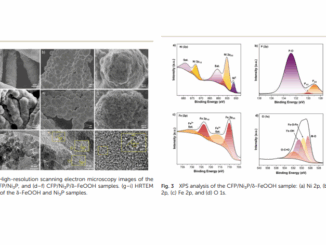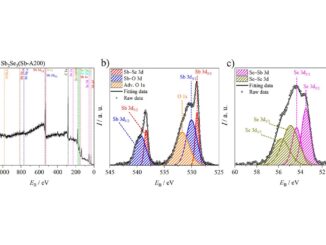
Ag3BiO3/AgBr heterojunction formation for dye degradation under visible light and its photocatalytic mechanism
Abstract: This work investigates the photocatalytic properties of a nanostructured Ag3BiO3/AgBr composite prepared by the co-precipitation method followed by ion exchange for the degradation of rhodamine B (RhB) and methyl blue (MB) dyes under visible light. The structural, morphological, surface chemical composition and optical characterization of the nanocomposite obtained was studied by X-ray diffraction (XRD), scanning electron microscopy (SEM), X-ray photoelectron spectroscopy(XPS) and UV–Vis diffuse reflectance spectroscopy (DRS) analyses. The Ag3BiO3/AgBr heterojunction showed superior photocatalytic performance in comparison with Ag3BiO3. The exceptional degradation of RhB and MB dyes (96 % and 100 %, respectively, at 80 min) was mainly attributed to the formation of a heterojunction with excellent surface properties capable of enhancing the efficiency of photogenerated electron-hole separation. The possible band alignment and photocatalytic mechanism of the composite were revealed by DRS and XPS and Mott–Schottky analysis by electrochemical measurements and were related to the efficient charge separation of photogenerated charges. In short, the results herein provide interesting insights into the design and fabrication of Ag-based photocatalysts.
Author(s): Román Alvarez Roca, Edson Tobias de Jesus, Mayara Coelho Sá, Margaret Dowson, Gilmar Silvério da Silva e Elson Longo
Composites Communications
Published: April 2025, Volume 55, 102304
DOI: https://doi.org/10.1016/j.coco.2025.102304
CDMF
The CDMF, hosted at the Federal University of São Carlos (UFSCar), is one of the Research, Innovation and Dissemination Centers (RIDC) supported by the São Paulo State Research Support Foundation (Fapesp), and also receives investment from the National Council Scientific and Technological Development (CNPq), from the National Institute of Science and Technology of Materials in Nanotechnology (INCTMN).




